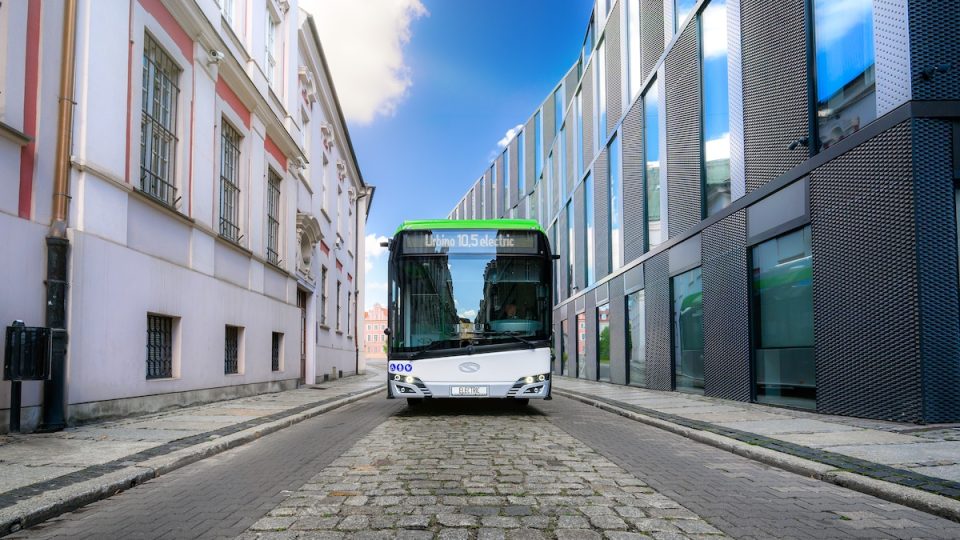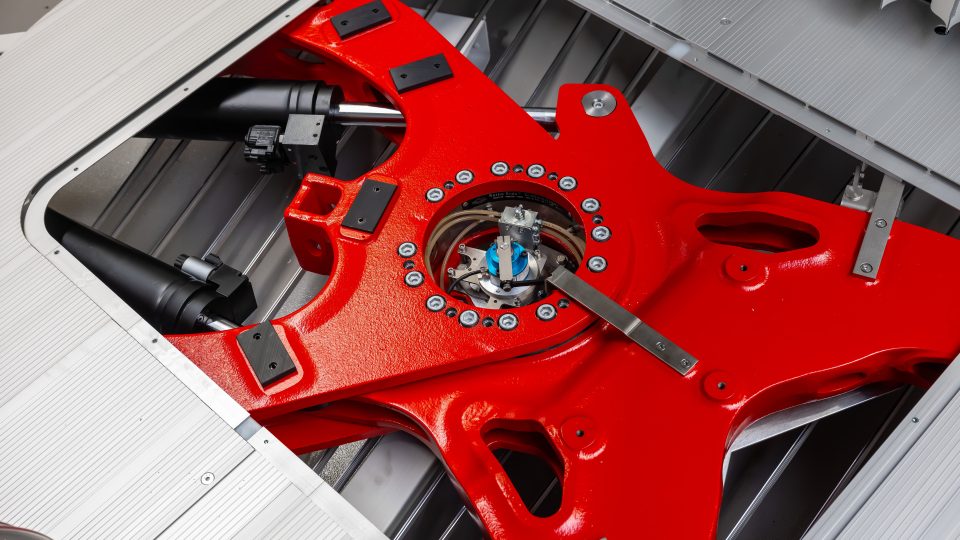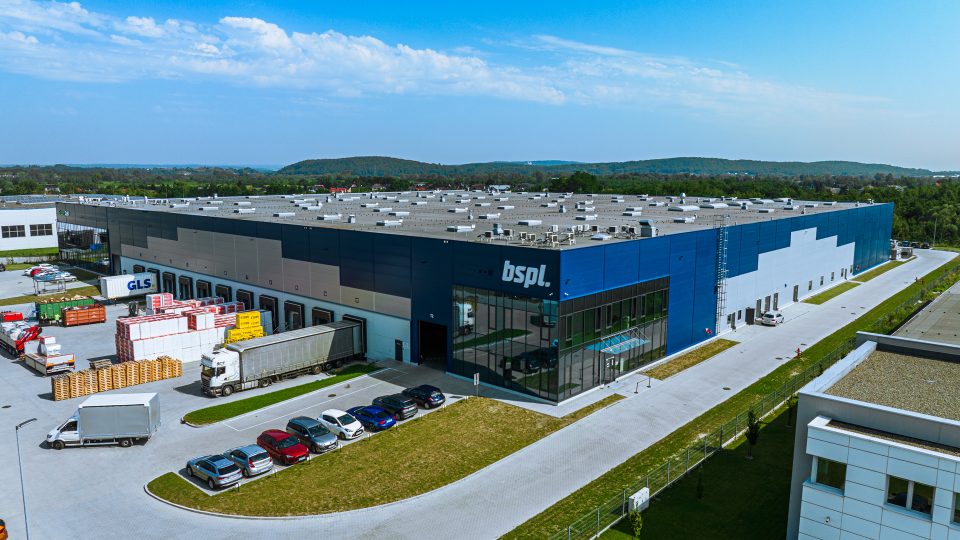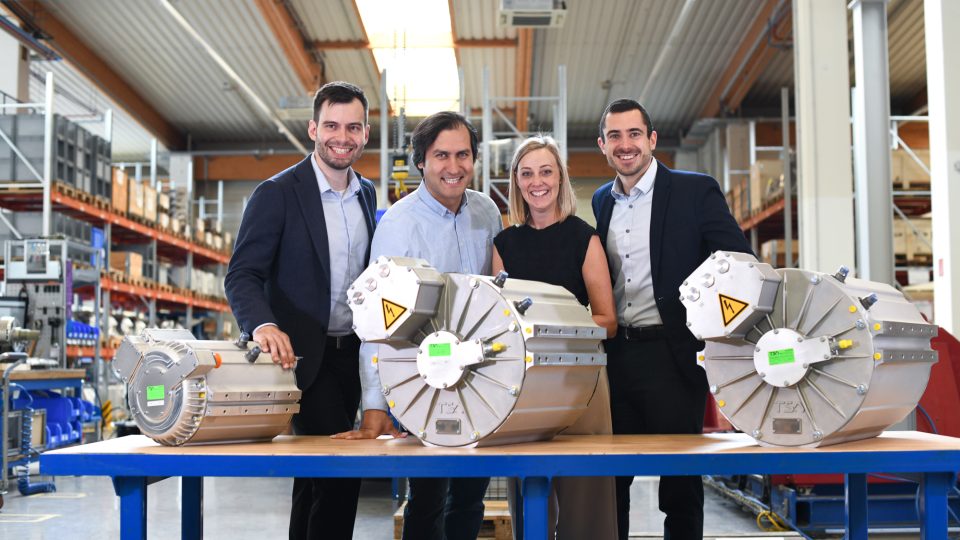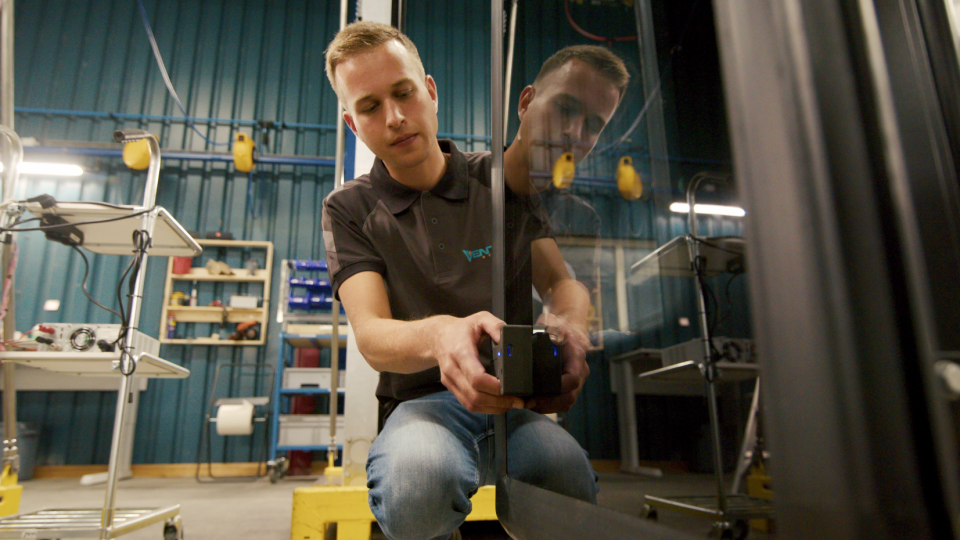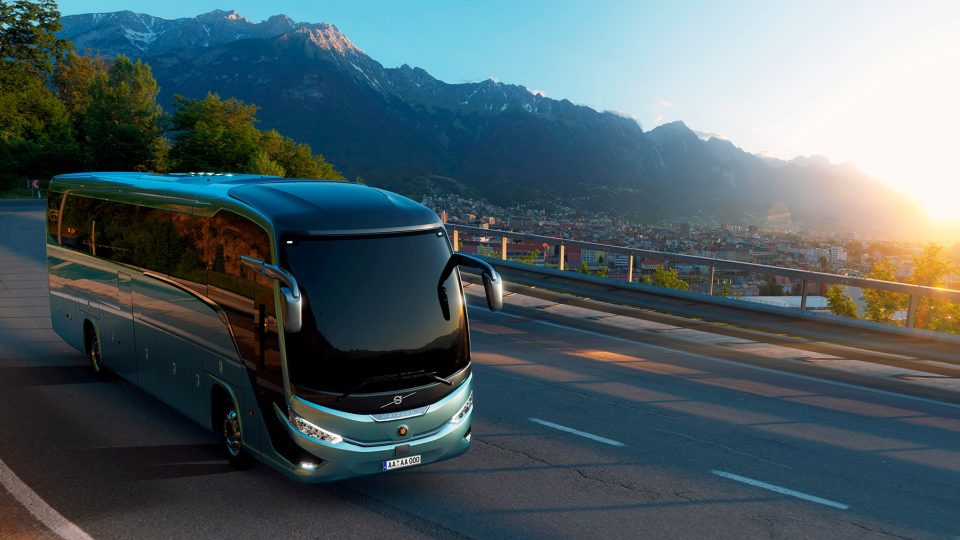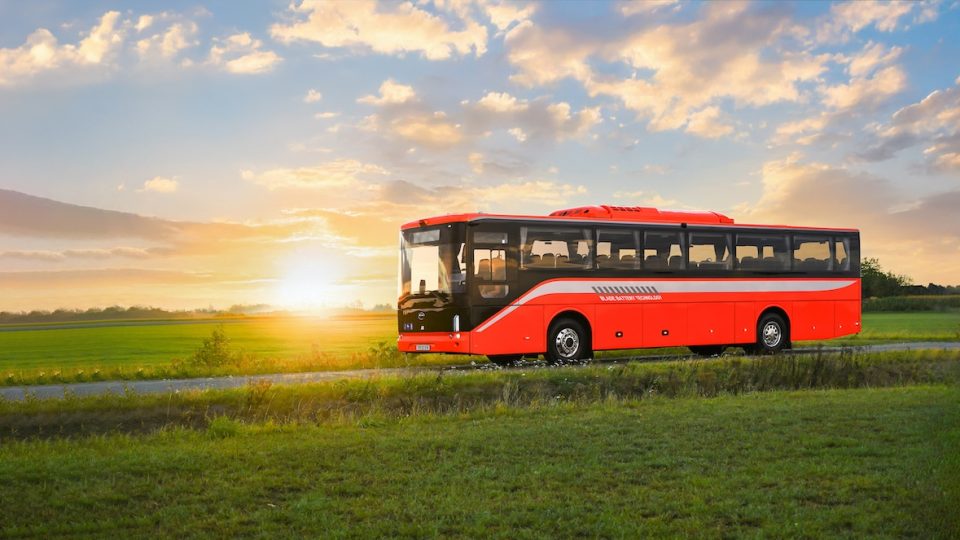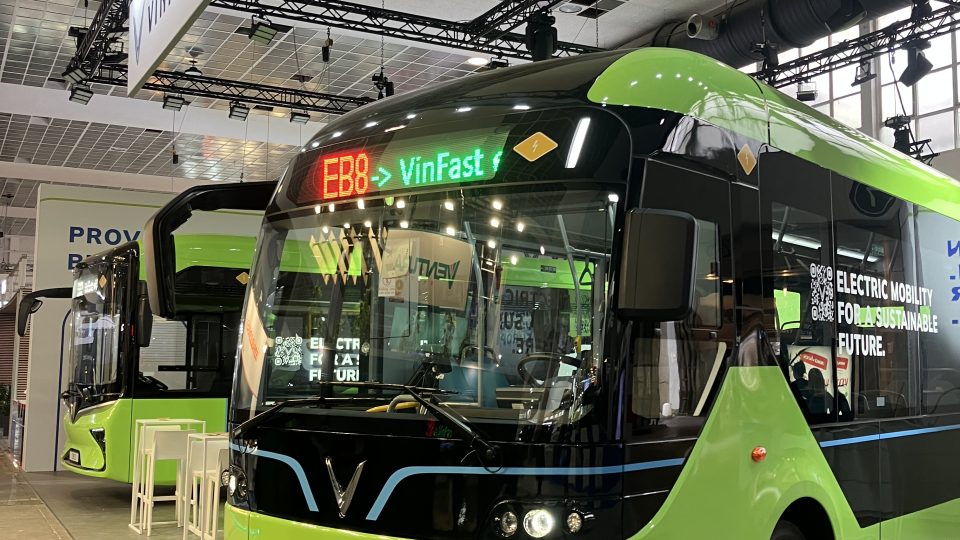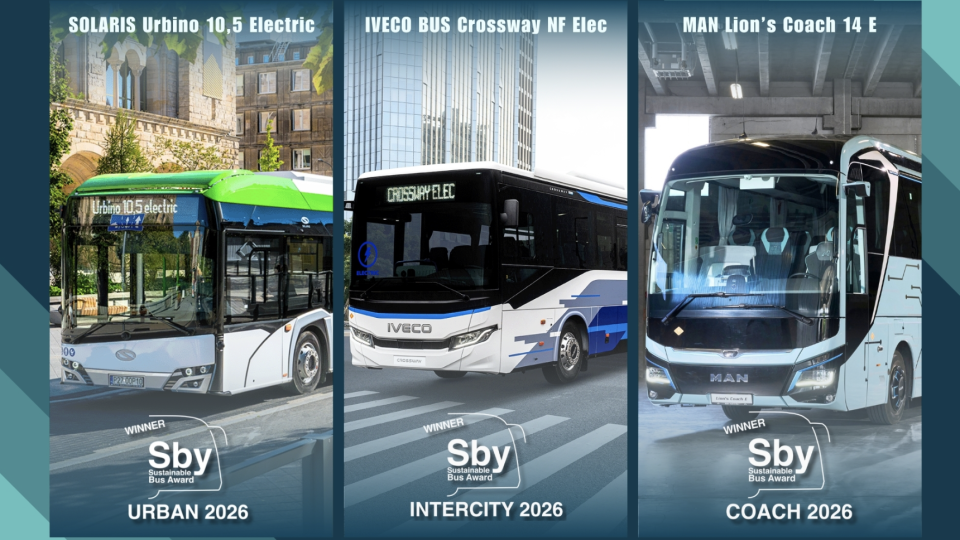Intercity electric buses, which models are available on the European market?
Intercity electric buses represent a growing segment in the passenger transportation market. As of 2023, only 200 intercity electric buses were registered in Europe, a stark contrast to the over 6,000 municipal battery electric bus registrations. Despite this nascent stage, advancements in technology and regulatory changes are paving the way for broader adoption. Intercity electric […]
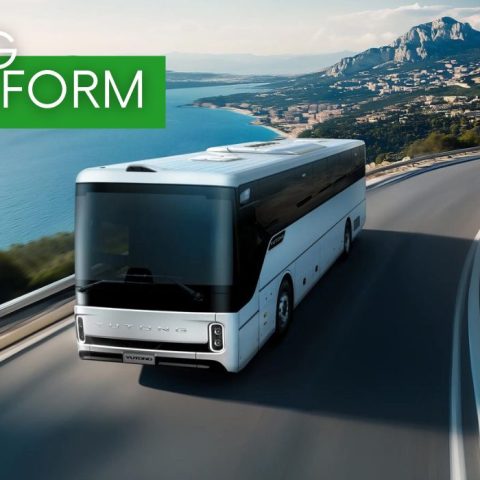
Intercity electric buses represent a growing segment in the passenger transportation market. As of 2023, only 200 intercity electric buses were registered in Europe, a stark contrast to the over 6,000 municipal battery electric bus registrations. Despite this nascent stage, advancements in technology and regulatory changes are paving the way for broader adoption.
Intercity electric buses in Europe: the regulatory framework
The European Union has set in 2023 ambitious targets for reducing CO2 emissions from heavy-duty vehicles. While city buses will have to be 90% zero emission in 2030 and 100% zero emission in 2035, Intercity buses fall into the same category as coaches and trucks. By 2030, new registrations must achieve a 45% reduction in emissions, with targets escalating to 65% by 2035 and 90% by 2040.
Low Entry layouts are paving the way for intercity electric buses
Low Entry configurations are set to become increasingly popular in the Class II segment, due to two main factors: accessibility and the energy transition. The partially lowered floor design facilitates fast passenger handling and requires only a practical, quick manual ramp for wheelchair access, enhancing overall accessibility.
Moreover, Low Entry buses offer greater flexibility for accommodating alternative drive technologies. These technologies, often positioned on the roof, can leverage a specially modified load-bearing structure to maintain acceptable overall height. This design allows for the integration of new electric technologies without significantly altering the bus’s profile.
However, there are trade-offs. Low Entry buses must sacrifice some seating and luggage space to maintain overall passenger capacity. Additionally, they are generally more expensive than their normal floor counterparts, positioning themselves just behind fully lowered buses in terms of cost.
Despite these challenges, the increasing emphasis on ecological factors is likely to drive growth in this segment.
Intercity electric buses: normal floor models are coming!
Iveco Crossway Elec normal floor
In early December 2024, at the French expo Autocar Expo in Lyon, Iveco Bus raised the curtain in the Crossway Elec normal floor, following the previous launch of the LE model (see below). First order in the domestic market was made official just a few days after.
The Iveco Crossway Elec features a maximum declared autonomy of 500 kilometers, thanks to 69 kWh battery packs each with high energy density and assembled by FPT Industrial, which use NMC chemistry; the life cycle of the modules, guaranteed for 10 years, is 15 years.
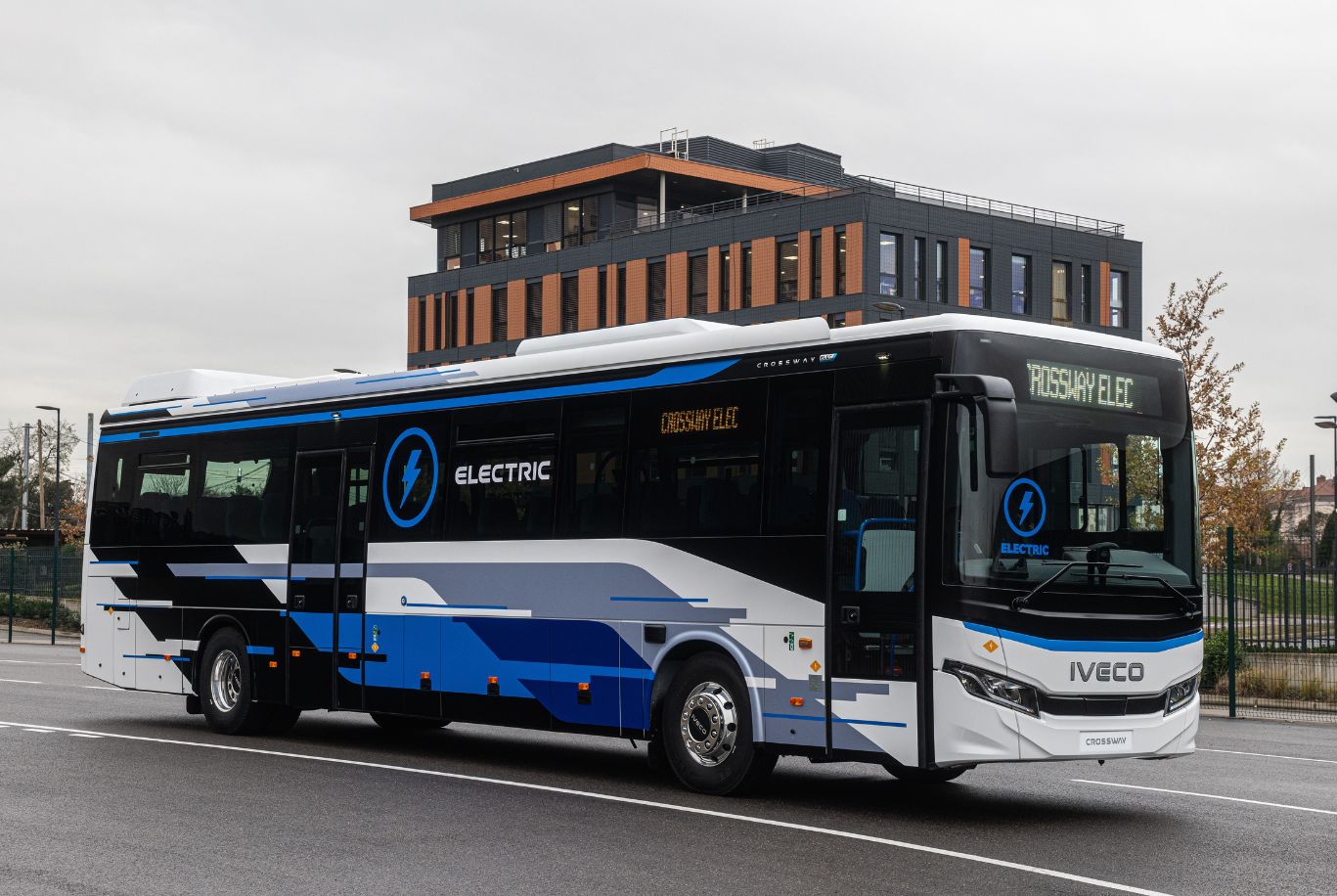
Depending on the needs, 3 to 6 battery packs are planned, allocated to the roof and the rear if three or four; if, instead, five or six modules are planned, they are planned to be placed in one of the side luggage racks.
Motor is by Siemens, Elfa III model with 290 kW of power and 3,000 Nm torque. Two length variants are planned: 12 and 13 meters. In the first case, the passenger load capacity is 57 people, which increases to 63 in the long version.
Mercedes eIntouro is coming in 2026
The only well-established normal floor intercity bus in electric version presented to the public, as of today, is the Mercedes eIntouro. It was unveiled in late November 2024 and will be available for orders in first quarter of 2025. The eIntouro will be officially launched at Busworld Europe 2025, with deliveries beginning in 2026. Production sites? France and Istanbul.
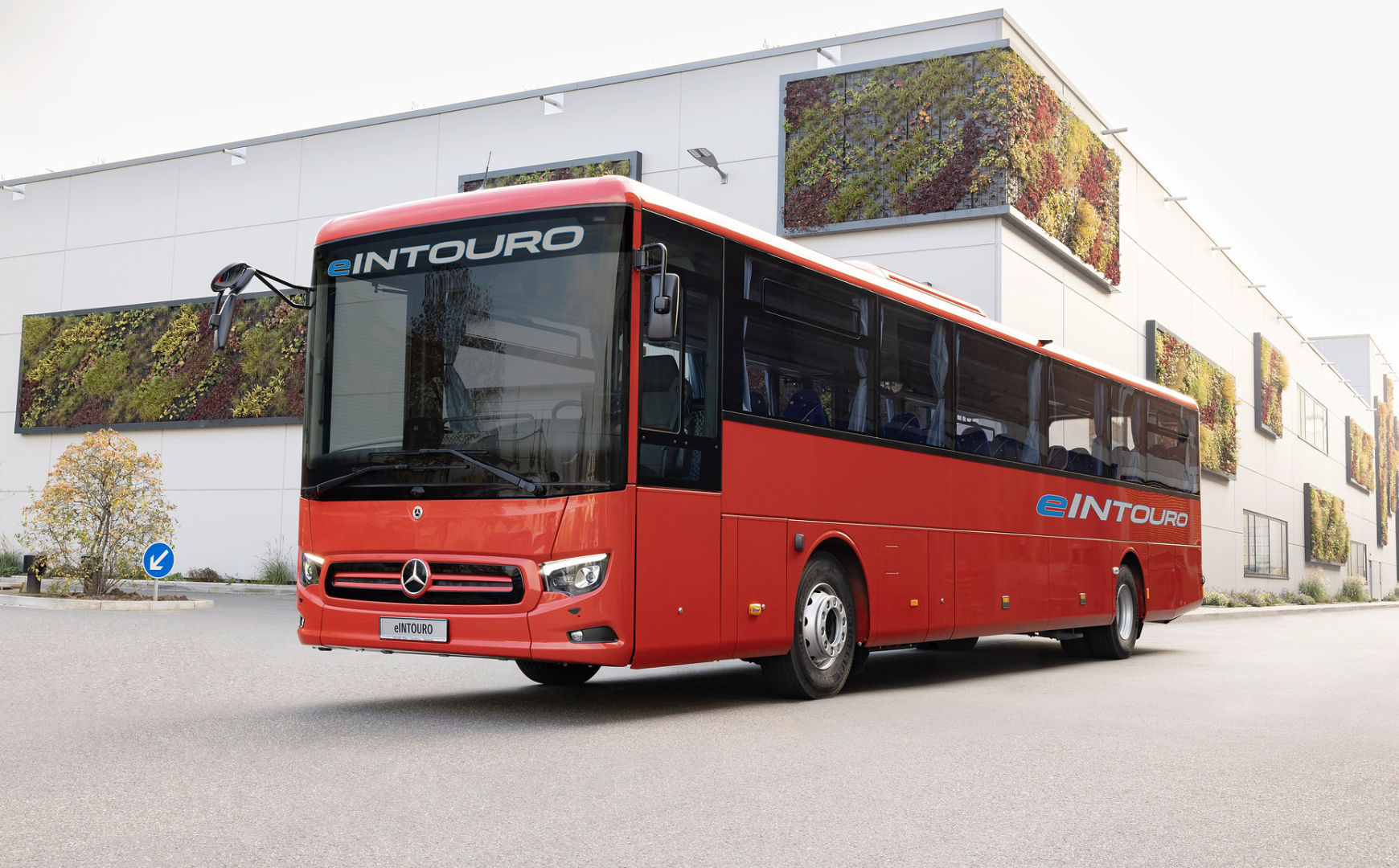
Interestingly enough, it’s equipped with a different set of battery and driveline than the eCitaro range, made of LFP batteries and central motor by ZF. It’ll be produced in the OEM’s plants in Turkey and in France.
Two lengths are available: the 12.18-metre eIntouro and the 13.09-metre eIntouro M. Seating variants from 50 to a maximum of 63 seats are covered.
E-Territo U by Otokar
The electric intercity segment also sees the presence of Otokar, which offers the high-floor e-Territo U. The model, moreover, is built on a platform that can also accommodate hydrogen technology. The e-Territo U is already in production and ready for order in 2025. It is a Class II with a length of 13 meters, maximum power of 410 kW and passenger capacity of up to 63 people.
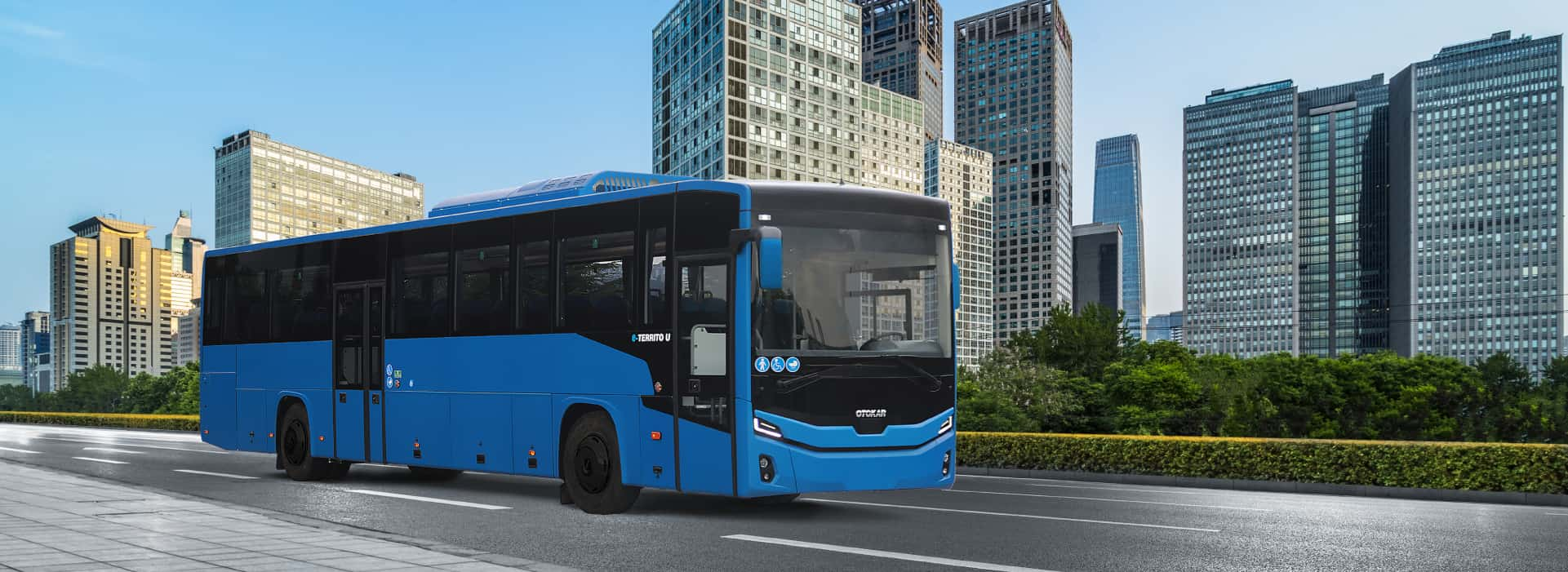
Temsa LD SB E
The Temsa LD SB E was presented for the first time at the IAA expo in Hannover in 2022 and re-proposed at Busworld in Brussels in October 2023.
The vehicle is one of the very few intercity battery-electric models on the European market as of today.
The Adana-based manufacturer’s Class II intercity bus is available in two length variants – 12,365 and 13,080 millimetres, with up to 63 seats on the longest version (the one that we had the opportunity to video test drive in July 2024). Batteries are assembled in house and equipped with the Temsa Battery Management System. The chemical formula is NMC (Nickel-Manganese-Cobalt) and they are available in three different capacities: 210, 280 and 350 kWh (6, 8 or 10 modules).
Solaris intercity e-bus platform is in preparation!
Solaris plans to launch a dedicated high-floor intercity electric bus platform by 2026.
The Polish OEM showed during its 2024 press conference, held in March 2024, the first renderings of the future intercity bus platform (picture on the left), set to be “ready for commercial activities in 2026“, as said Solaris CEO Javier Iriarte. The renderings have been then showed in a updated version (on the right) during its 2025 presentation (on Solaris 2024 results).
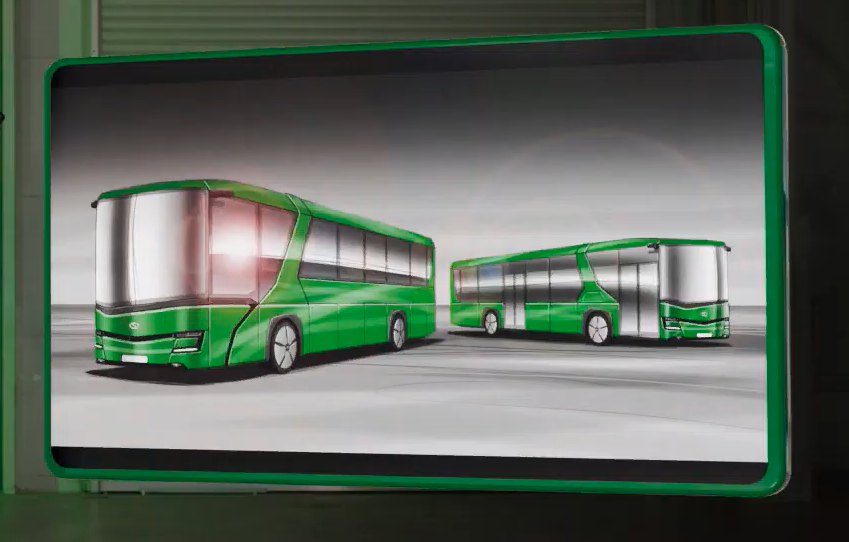
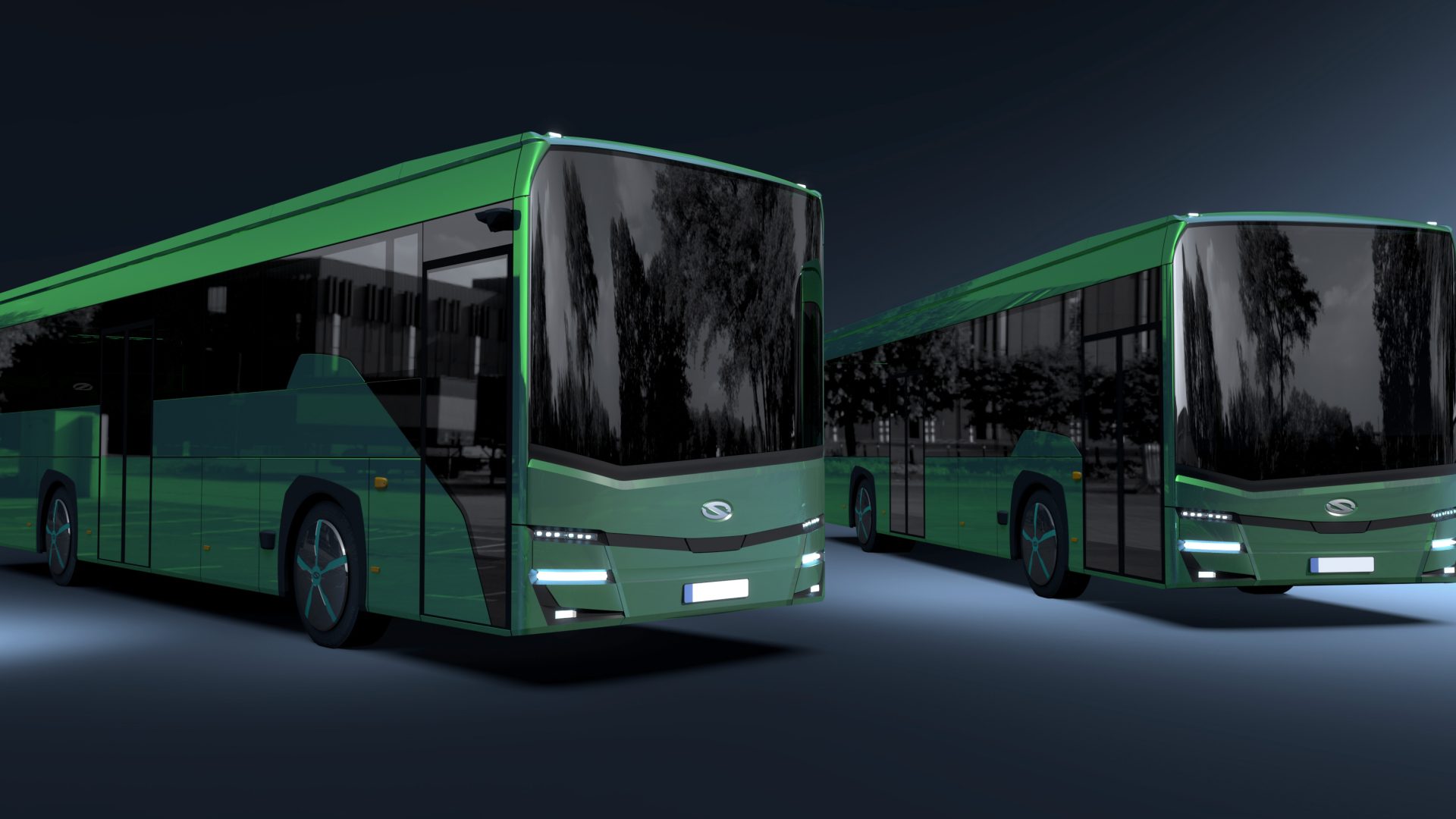
Over the next few years, Solaris states it will introduce a new zero-emission intercity platform in three different lengths: 10.9, 12.2 and 13 meters. It is worth noting that each of these models will be available as both battery and hydrogen vehicles. Developing Solaris high floor intercity electric bus platform is an activity headed by Luca Cordiviola that in September 2023 year joined Solaris in the new position of Interurban Platform Director.
It should be however be noted that Solaris offers possibility of homologation in Class II both on the Urbino 9 Low Entry Electric and on the 15-meter Low Entry launched in October 2020.
Yutong to offer the IC12E
Yutong announced in early 2025 (sharing some nice renderings on social media) the upcoming introduction of the IC12E model, a battery-electric intercity bus designed for long-range operations.
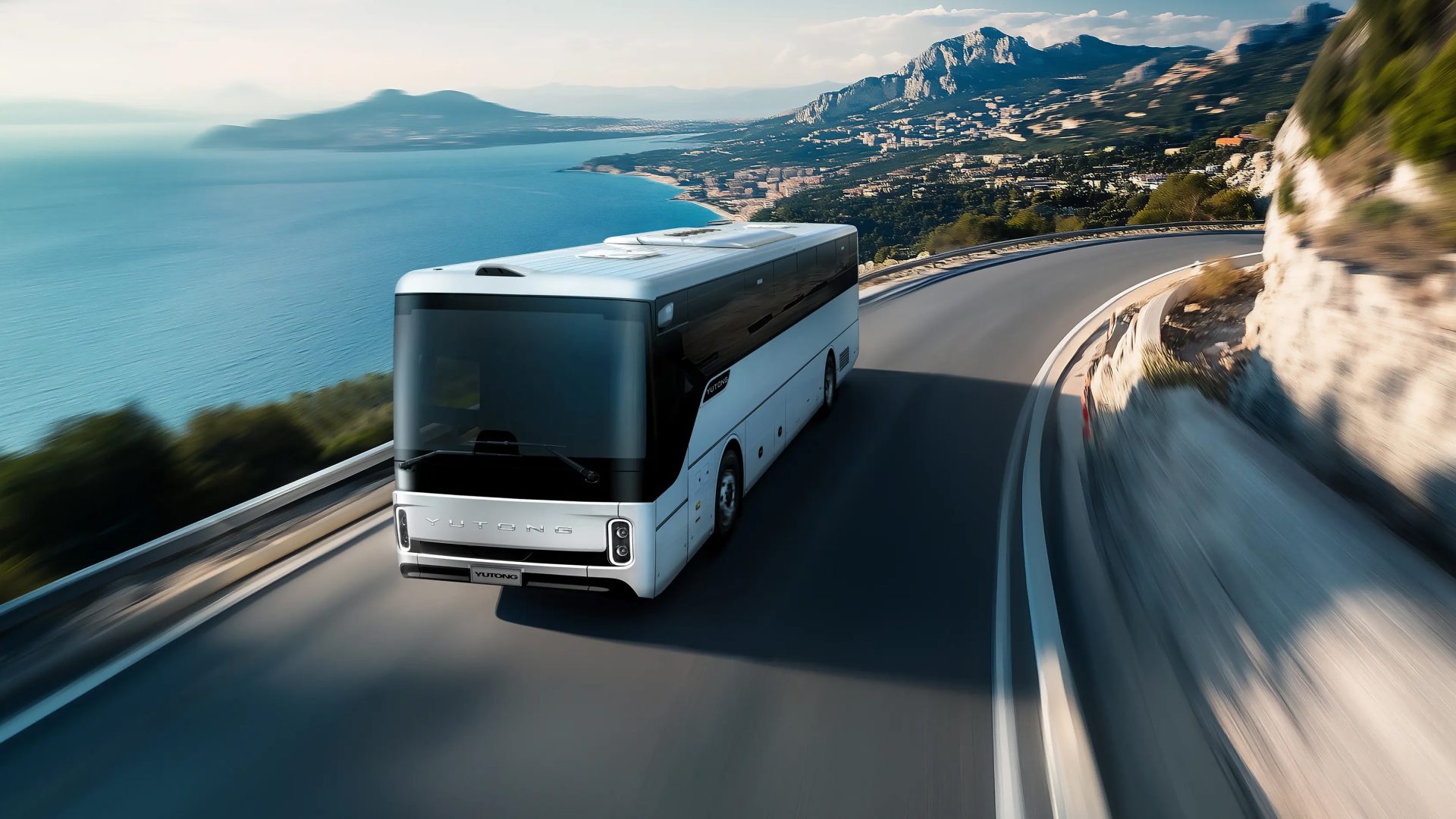
The standard battery configuration is 400 kWh, with an optional 466 kWh pack. Yutong offers a guarantee of 1.5 million kilometers or 15 years, with minimal battery degradation over this period.
The Yutong IC12E measures 12,660 mm in length, 2,550 mm in width, and 3,500 mm in height. It has a maximum seating capacity of 59 passengers, plus space for luggage with a boot volume of 4.5 cubic meters.
Intercity electric buses: Low Entry in the spotlight
Irizar i3 intercity e-bus at FIAA 2024
Irizar has launched the new i3 intercity e-bus model at FIAA in Madrid. On show there are: also a new generation Irizar i6S Efficient unit, an i6S Efficient Hydrogen, and an Irizar ie tram urban electric vehicle.
The bodywork of the new electric Irizar i3 is available in an integral self-supporting configuration and with different electric chassis.
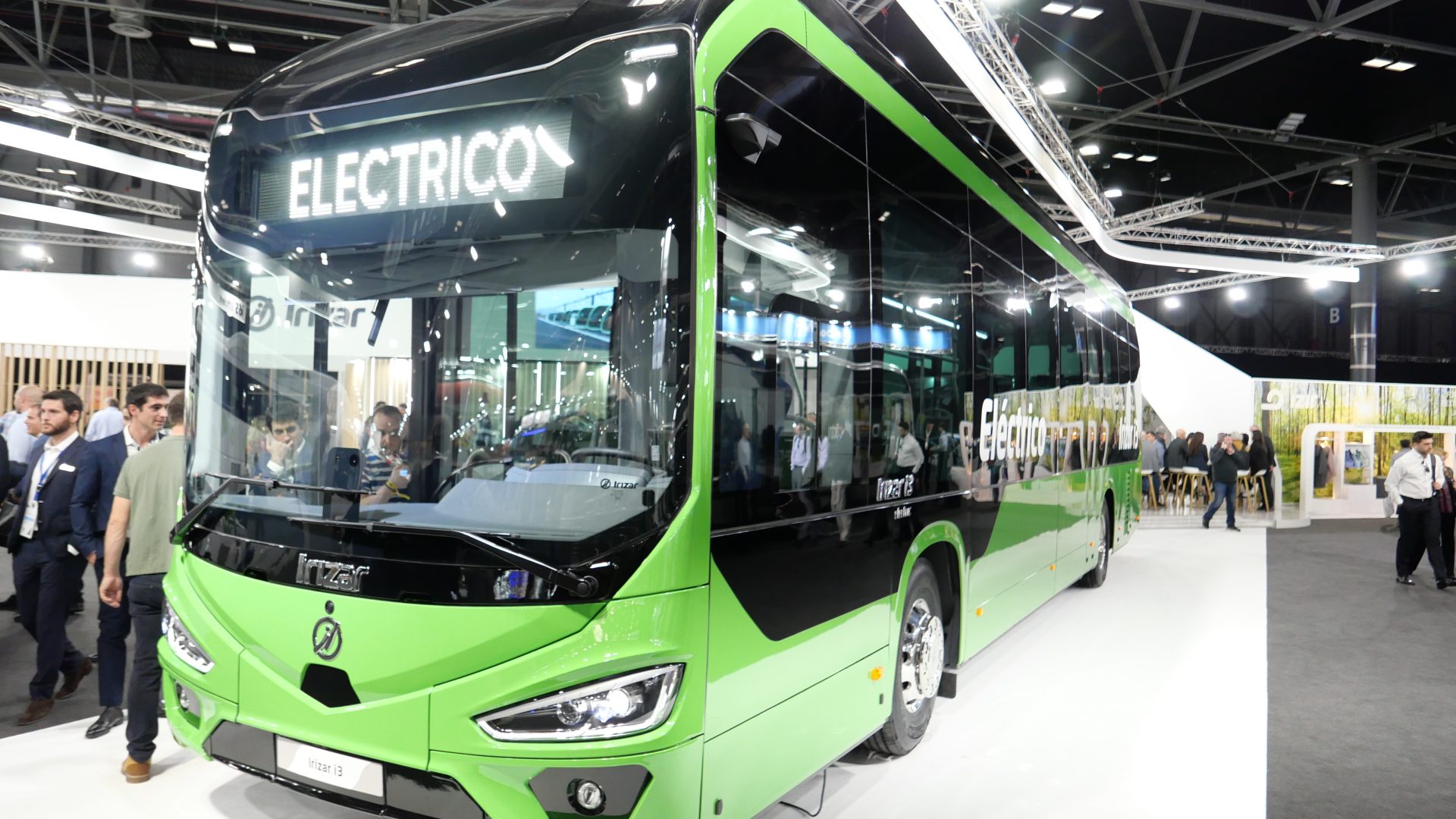
The new class II electric low entry Irizar i3 features “a totally renewed design, in addition to a range of vehicles with a new generation of lighter, more comfortable integral Irizar chassis with up to 50% lower consumption. The vehicles also have the most stringent safety and cybersecurity systems on the market, an improved cockpit with a redesigned dashboard, weight reductions and improvements in consumption and emissions”, Irizar states.
Iveco Bus Crossway Low Entry Elec
Iveco has been a pioneer in the intercity electric bus market with its Crossway Low Entry model. The Iveco Crossway is the most sold intercity bus in Europe, and has broken a new production record as the 60,000th unit rolled off the assembly line last year since its launch in 2006. Together with the Setra MultiClass, the Iveco Crossway LE is the most popular LE bus available in Europe (see our technical focus).
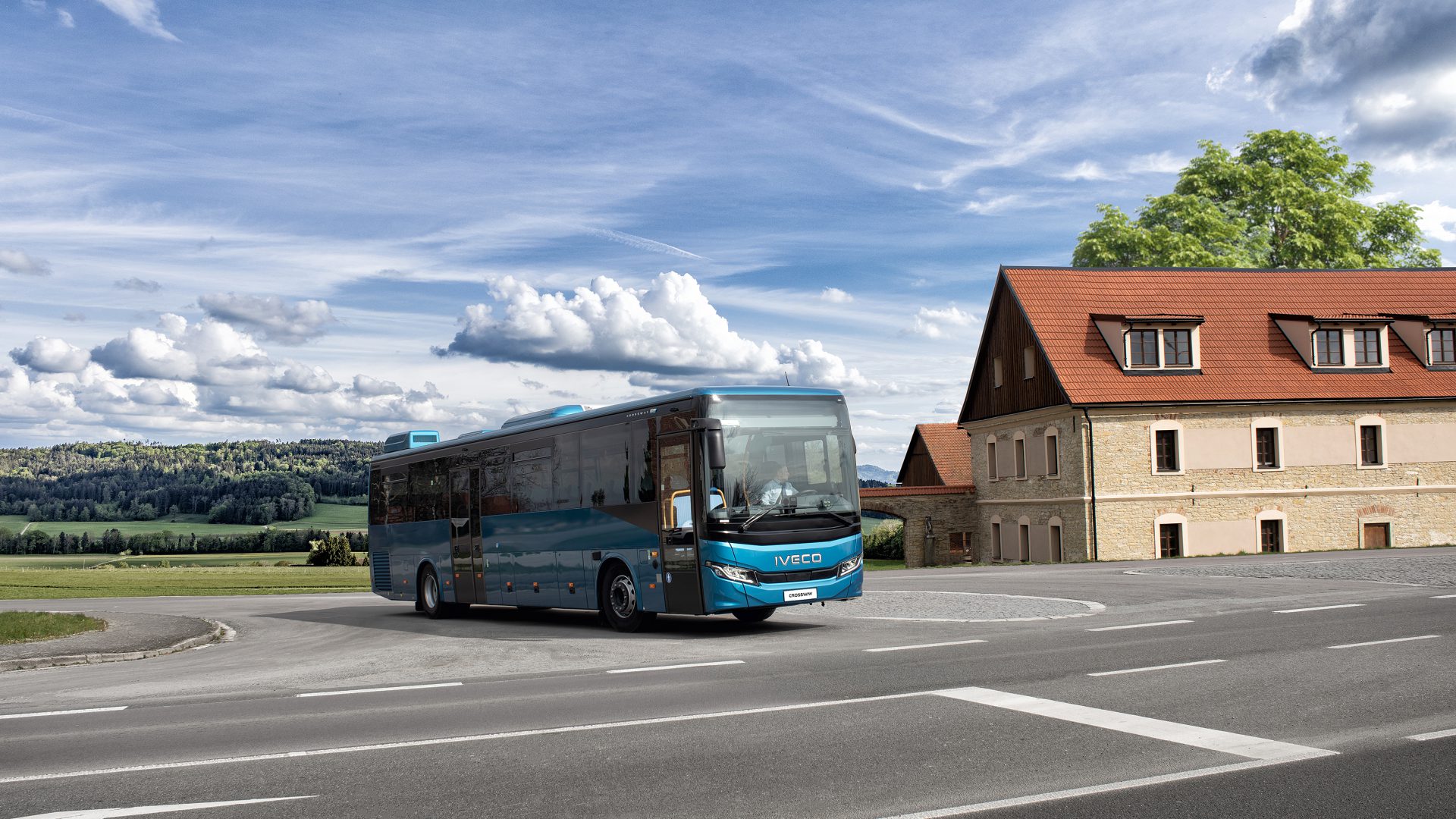
The new Iveco Crossway Low Entry Elec is available in both urban (Class I) and intercity (Class II) variants, with options for 12-meter and 13-meter lengths. Powered by a central electric motor delivering 330 kW of power and a maximum torque of 2,200 Nm (by Siemens/Accelera by Cummins), the bus relies on NMC lithium-ion batteries assembled by FPT, offering high energy density (180 kW/kg).
The Class I version can be equipped with five, six, or seven battery packs, providing respective energy capacities of 346 kWh, 416 kWh, and 485 kWh. The Class II version features 416 kWh or 485 kWh capacities.
The Iveco Crossway Low Entry Elec was one of the main novelties from the electromobility-focused event held in Paris in May 2023 where electric versions of Crossway LE, Streetway and Daily have been unveiled.
The intercity e-bus launch is in line with the brand roadmap of having a full electric bus range in 2023. Iveco is also working on developing high-floor intercity vehicles, which are essential for longer routes and more demanding operational conditions. The company’s ongoing investments in electric bus technology underscore its commitment to sustainable transportation.
MAN Lion’s City E LE
Unveiled at Busworld Brussels 2023, this model exemplifies MAN’s first step in the intercity electric bus segment. The vehicle can indeed be homologated both in Class I and Class II.
Standing capacity in MAN Low Entry electric bus varies depending on the configuration and the number of batteries installed, that can range from a minimum of four (320 kWh) to a maximum of six (480 kWh).
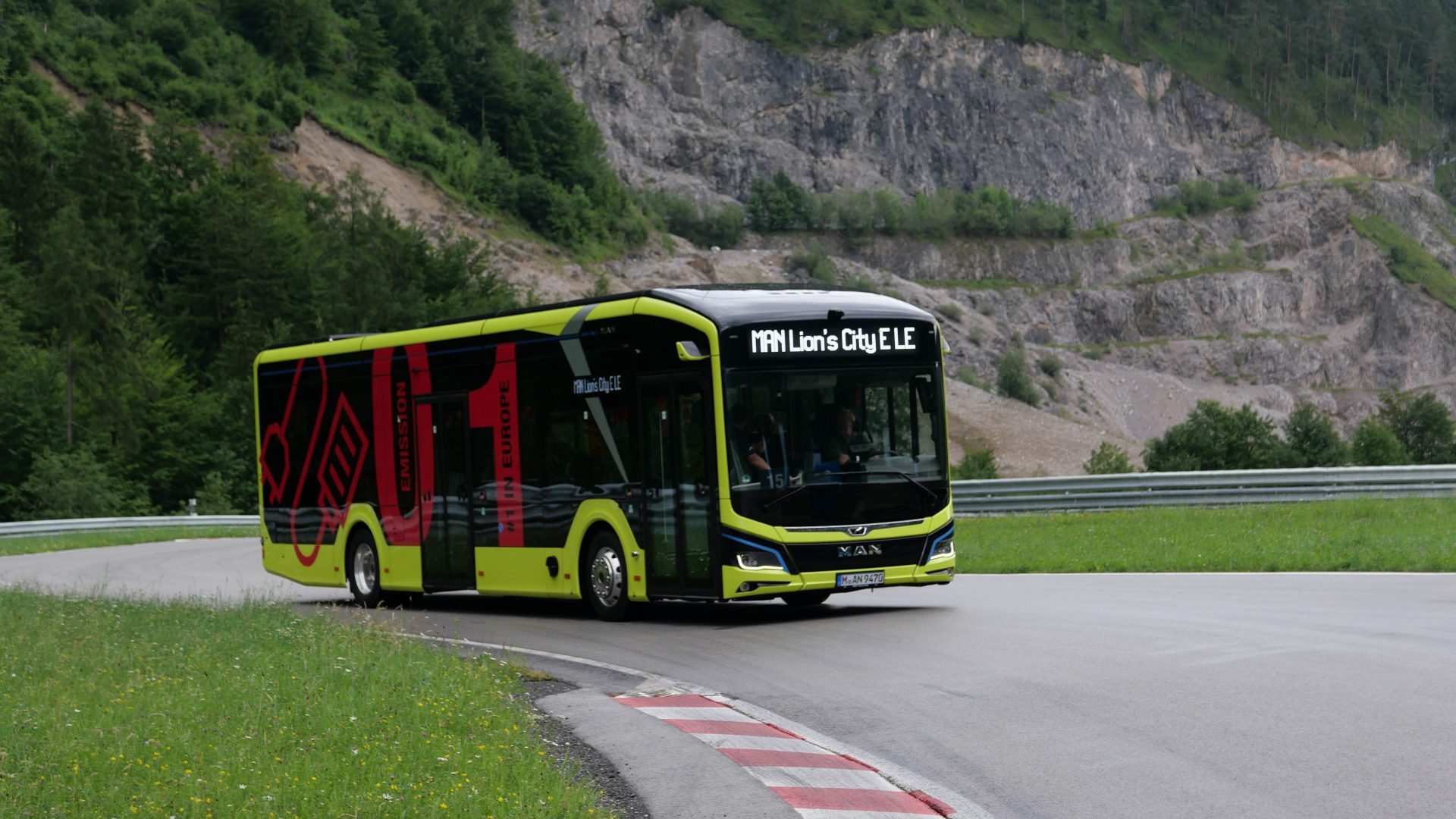
The bus uses NMC (Nickel Manganese Cobalt) batteries, arranged in 80 kWh modules across the roof. Each module features a Battery Management System (BMS) that balances the state of charge and maintains optimal thermal conditions around 25°C. Future upgrades, expected by the end of next year, include 90 kWh battery modules with a Depth of Discharge (DoD) of 90%, increasing usable energy by approximately 20%.
The propulsion system consists of a centrally mounted permanent magnet synchronous motor, developed within the Traton Group. This motor, connected to the drive axle via a transmission shaft, delivers a continuous power output of around 160 kW, with peaks over 230 kW and a maximum torque of 2,100 Nm. The motor is equipped with an internal oil-based lubrication and cooling system, ensuring efficient performance and longevity.
Volvo 8900 Electric, with MCV
Volvo Buses has entered the intercity electric bus market with its BZR platform, launched in March 2024, which is set to join the already available BZL platform in the Swedish company’s offering. The Volvo BZR platform is designed to meet a diverse range of transportation needs, including commuting, intercity travel, and coach applications, from Low Entry to High Floor, with options for two or three axles and various battery configurations.
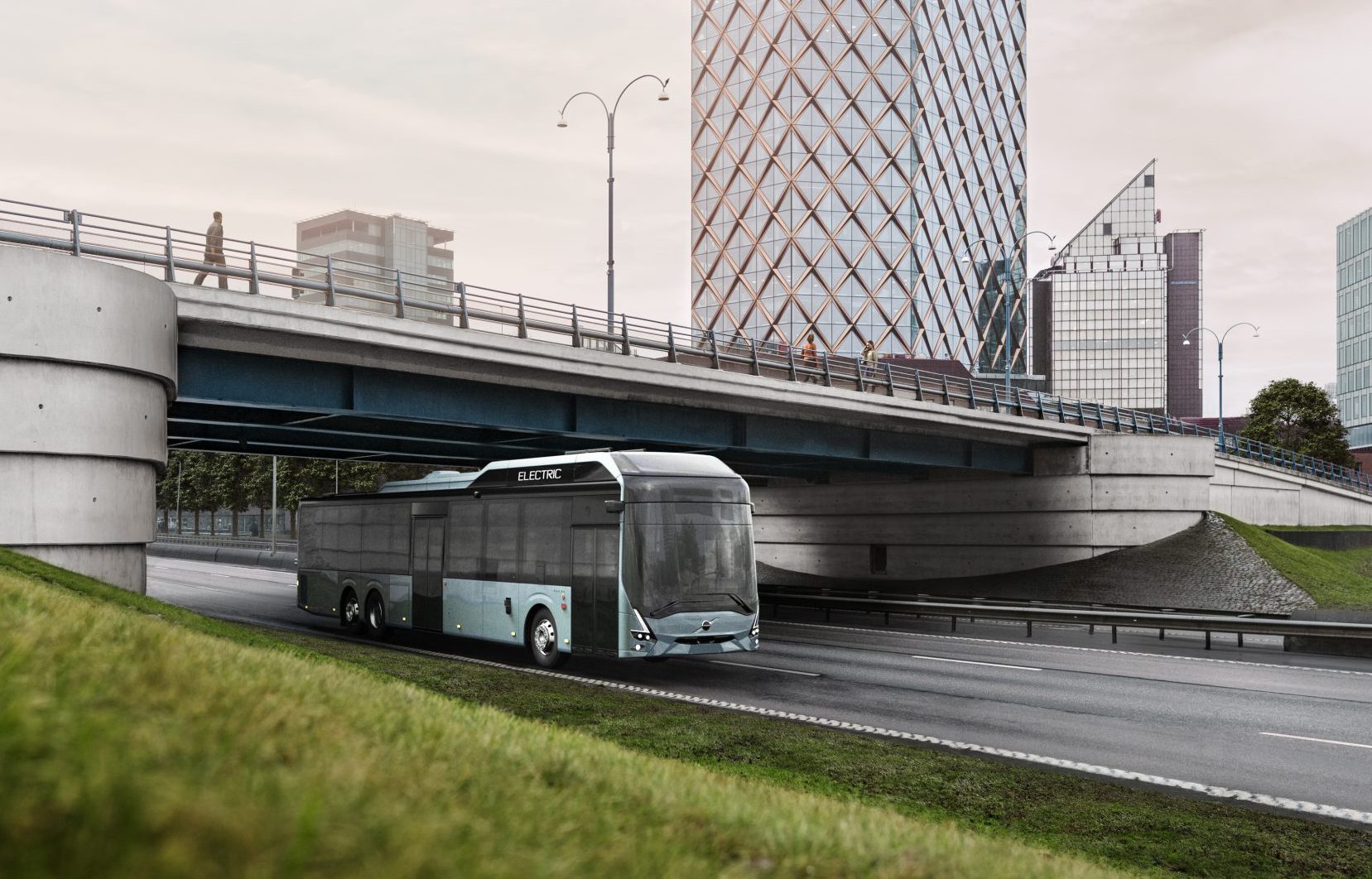
Also a first concept version of the 8900 Electric with BZR chassis and Volvo bodywork has been showed in Gothenburg at the showcase event, although the series production of the model will happen in Egypt through bodybuilder partner MCV.
At launch, the platform accommodates lengths from 9.5 to 15 meters, a maximum weight of 27,000 kg and traction power up to 400kW, or 540 hp. In combination with the modular battery arrangement of up to 540 kWh, the Volvo BZR Electric is suitable for most of the applications in extended city and intercity operation.
Just a few steps back: in March 2023, Volvo Buses announced the decision to cease the production of complete buses, both urban and coach, in Europe. Then, the company had signed letters of intent with MCV for the manufacture of bodies for city and intercity buses, and with Sunsundegui for tourist buses (with not great results…). The definitive agreement signed with MCV included the development “an electric bus for intercity traffic”.
Scania Castrosua
Scania is also making inroads into the intercity electric bus sector with the introduction of a low-entry 4×2 e-bus model. Scania platform is coupled with Castrosua 75CS body. Batteries offer energy storage capacity of up to 520 kWh.
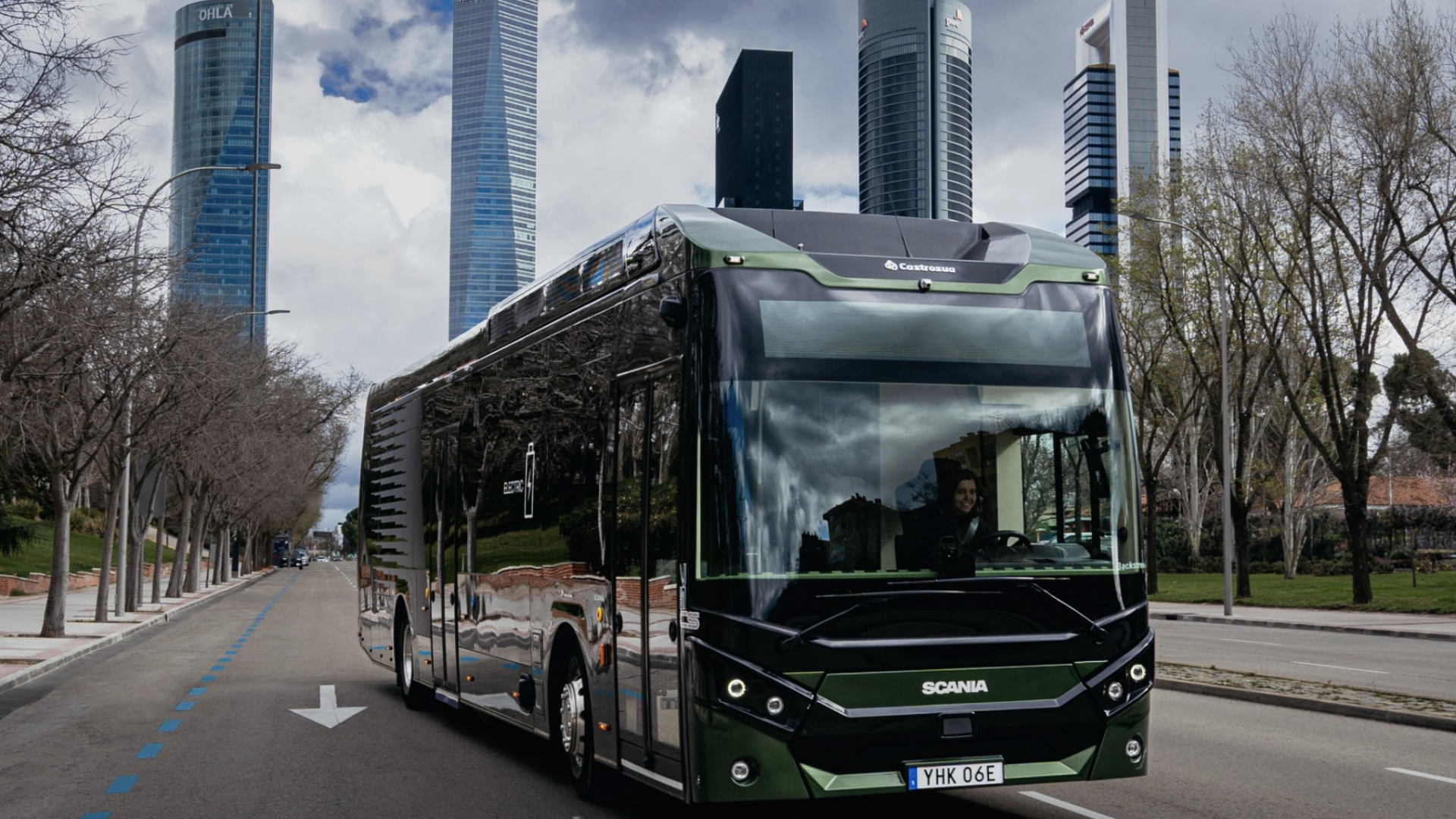
The model, presented at Busworld 2023, will be available in two performance steps – a four-battery variant with an installed capacity of 416 kWh and a five-battery variant with an installed capacity of 520 kWh.
The vehicle features a continuous power output of 250 kW at 1,750 rpm. Batteries are designed and produced in cooperation with Northvolt at Scania’s battery factory in Södertälje, Sweden. The batteries are fast-charging, Scania states, with a full charge in 150 minutes, more sustainable and with a lifetime of 1.5 million kms.
VDL Citea new generation, also for regional operations
Although VDL has not stated any specific projects so far concerning intercity vehicles, it’s true that the new generation Citea e-bus range has LE versions and can be homologated also in Class 2.
The bus range, purpose-built for electric traction, was previously presented on an online event in May 2021. The launch was announced in December 2020 and happened in September 2022.
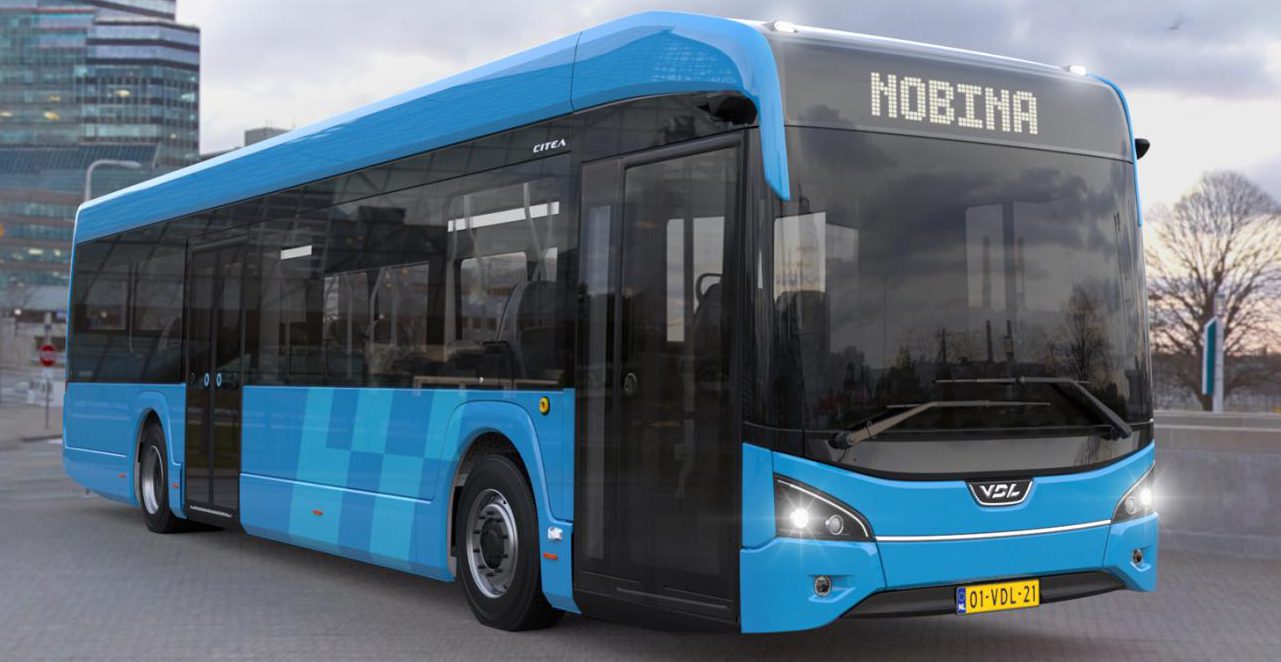
The new product family is the outcome of a new concept entirely developed on an electric driveline. And, for the first time, it houses batteries in the floor (in the standard version of 306 kWh). Maximum battery capacity is 490 kWh, with the kWh exceeding 306 put on the roof. Battery modules are assembled in-house by the VDL group. Formula is NMC, supplier not mentioned. What is interesting is passenger capacity: 110 people can be welcomed on the version with standard battery capacity.
In November 2022 Nordic region’s largest public transport operator Nobina awarded an order for VDL electric bus in Class 2 design for use in regional operations in Sweden.
Yutong and BYD
Chinese manufacturers, particularly Yutong and BYD, have been early entrants in the intercity electric bus market, as BEV technology is quite well established already in the domestic market. Yutong already has several units in operation across Europe.
The Yutong T12 is one of the electric coaches in Yutong’s portfolio. The 12-meter-long made-in-China tourer can rely on 422 kWh batteries that the manufacturer assures are capable of providing a range of about 530 km (supplier? CATL). In-house motors, ZF gearbox and Wabco braking system complete the picture. Capacity? 59 passengers. Also the three-axle battery-powered coach T15E is on offer in Europe.
BYD has deployed electric demo vehicles on Flixbus routes in the past. As of today, the group has on offer the B13 and B15 intercity Low Entry models, for 13-meter and 15-meter lengths respectively. They have been delivered in more than 300 units across Europe since 2022, according to company’s figures. Countries? Spain, Finland, Norway, Denmark and Sweden. And now BYD is developing a new intercity model featuring the Blade Battery technology, with developments expected in the near future.

